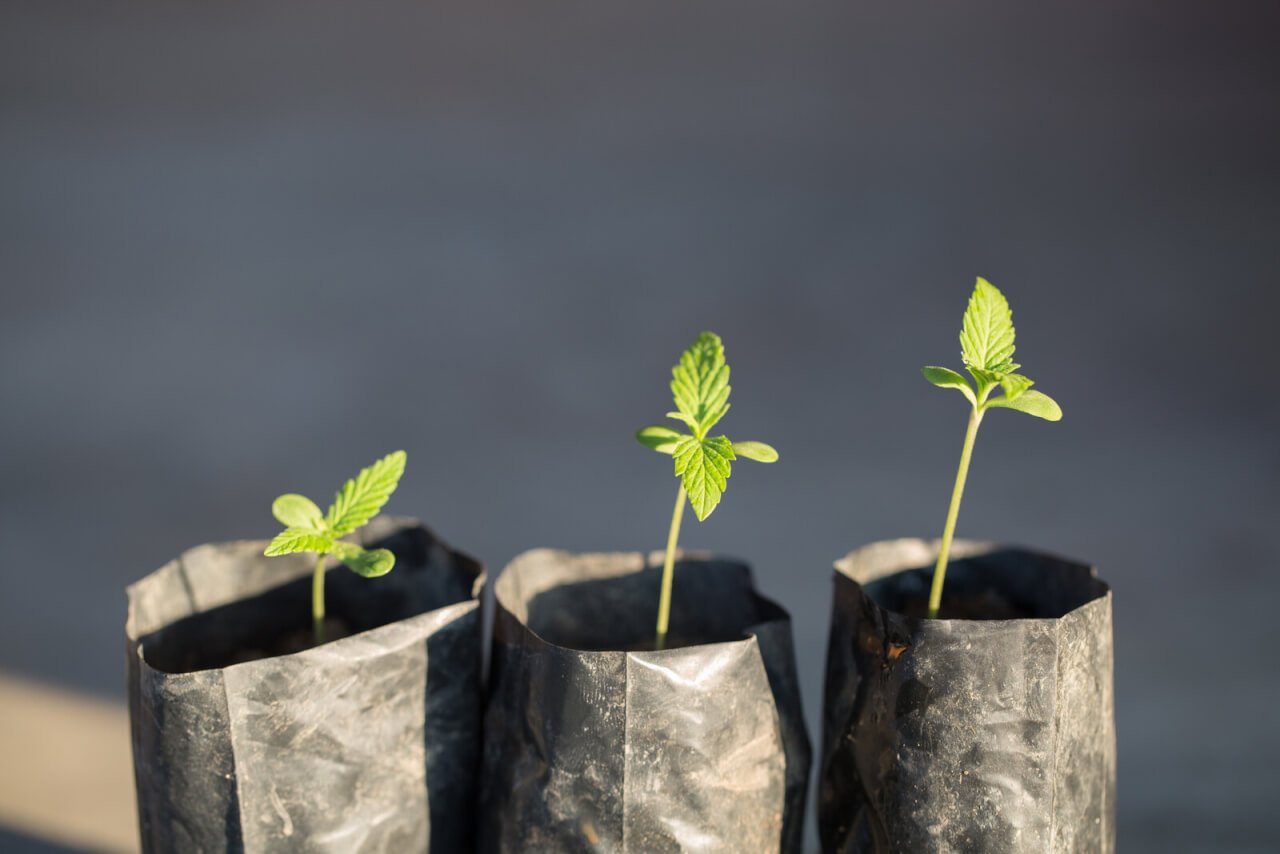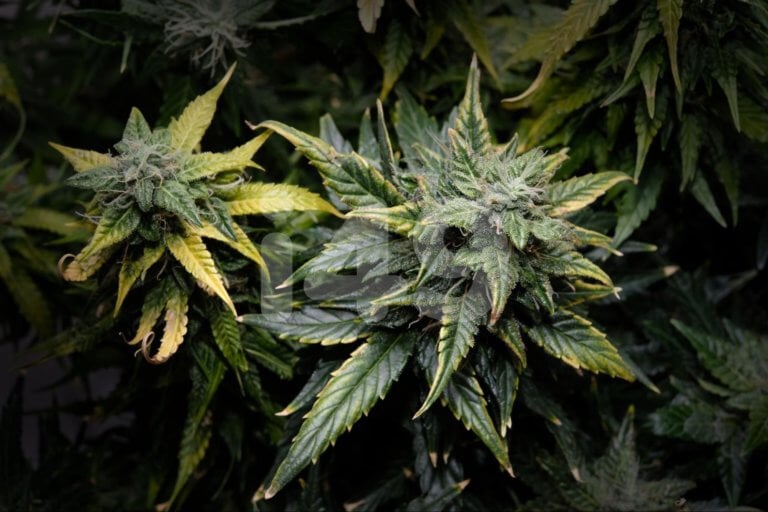Marijuana plants are fragile and can develop problems during the first few weeks of their life, also known as the seedling stage. Learning about common cannabis seedling issues and solutions is an excellent decision for any grower.
It’s vital to identify possible causes quickly and act decisively. Crops with a strong start usually have better germination rates and improved yields.
Are you a marijuana grower seeking knowledge about young plant problems and how to fix them? We’ll discuss common marijuana seedling issues and solutions. You’ll also learn about the crucial signs to look out for during this early growth stage.
Let’s get started.
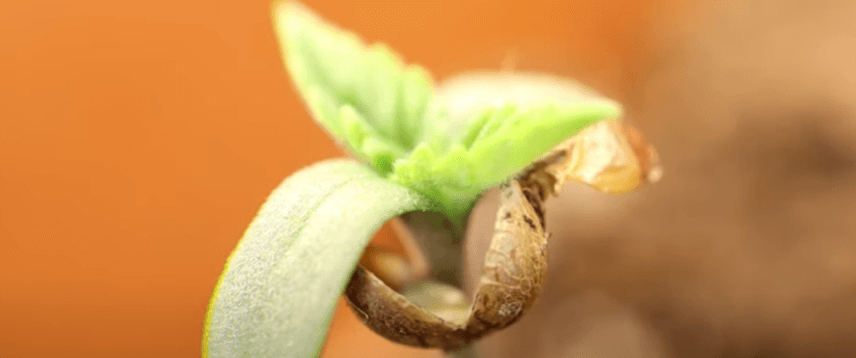
Common problems during the cannabis seedling stage and how to fix them
How do weed plants look when they start growing? Healthy seedlings appear short and thick with a vibrant green hue.
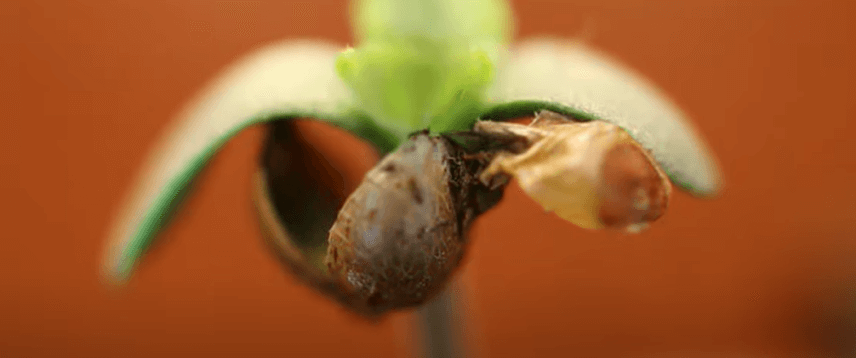
When sprouting seeds, overwatering, nutrient deficiencies, and heat stress are common problems. Improper lighting, stretching, and windburn may also cause root problems at this growth stage.
Let’s discuss each of these issues and how to solve them below.
Overwatering
Cannabis seeds require water and air for proper development. When growing weed in hydroponics, plants develop rapidly and thrive due to the increased oxygen in the moisture.
Cultivators keep a third of the roots out of water in hydroponic setups to absorb nutrients for healthy growth.

If you cultivate seedlings in a container, you may frequently encounter issues with watering your young weed plants. Your crops may also lack adequate oxygen if the roots sit in moisture for too long.

Overwatering is common in large containers, as they need time to dry out thoroughly. Plants grown in bigger pots also need more H2O than usual.
This problem is visible when your plants get droopy but don’t wilt. An overwatered female two-week-old seedling will retain its green shade but may start curling down. If you’re wondering how often to water cannabis plants, twice daily is best.
Select pots with suitable sizes and water the plants only when you have a dry soil surface. Whether you opt for small or large containers, create holes at the bottom to allow the liquid to drain.
It’s best to give your overhydrated plants time between waterings. Avoid excess H2O by using a small container and transplanting your seedlings into larger pots as they develop. Next, adjust the watering method and don’t leave plants in runoff liquid.
Underwatering
Inadequate growth and cannabis seedlings yellowing are a few symptoms of underwatered plants. Marijuana plants show signs of wilting and often look lifeless if the soil contains low water levels.

Not using the proper pot size for the various marijuana growth stages can result in underwatered crops. For example, cannabis seeds may get stuck in shell membranes if you grow them in large containers. The small roots can’t absorb sufficient water before it drains.
When a marijuana plant seedling can’t receive adequate water from the soil, it loses its shine. The foliage may droop downwards and dry out if the roots can’t get H2O from the ground.

If you provide the soil with an overdose of nutrients, you can expect seedlings with a dark green color. Twisted and discolored growth is a marijuana plant symptom of underwatered nutrient-enriched earth.
Get your crops back on track with a regular watering schedule. Keep the temperature at around 59–71°F and avoid cold water. Your plant absorbs the necessary nutrients to produce healthy leaves, stems, and buds at this range.
Problems with nutrients
Marijuana seedlings require micro and macronutrients to develop and blossom. While healthy cannabis plants usually have a green color, nutritional problems can cause leaf discoloration. Foliage with nutrition issues often becomes spotted, crispy, and pale.
Most issues related to nutrients come from the soil. Marijuana seedling problems can also arise due to nutrient deficiencies in cannabis, especially a lack of nitrogen, copper, iron, or calcium.
A pH imbalance and improper watering could also cause cannabis nutrient burn. Keep the soil pH between 6.0–6.5 to allow the roots to absorb beneficial nutrients. Next, increase the room temperature and the amount of water you feed the plants.

If your weed crops produce dark leaves or exhibit tip burn, it may be a sign of nutrient toxicity often caused by mineral overload. This shortage can develop within 24 hours if you feed your weed plants too much of one or more nutrients.
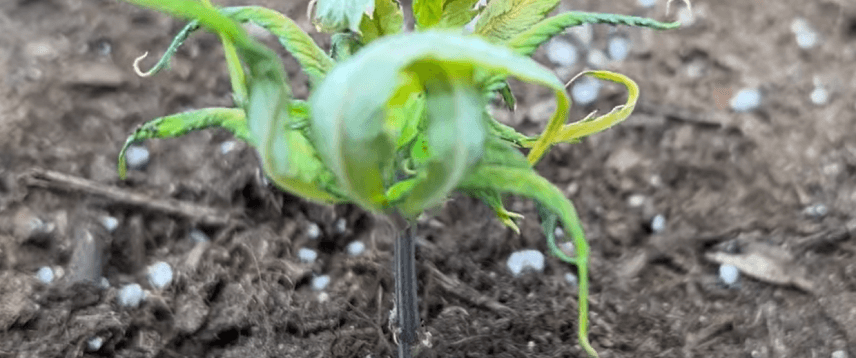
Solve these cannabis seedling problems by learning the correct nutrient dose for your chosen medium. Starting with half of the recommended amount helps you see how your young crops react, allowing you to adjust accordingly.
Heat stress
Heat stress adversely affects weed plants but is even more dangerous during the seedling stage.
Your fragile crops develop spots and wilt in hot weather, especially if they lack adequate moisture. Low humidity and elevated temperatures are common causes of heat stress in a previously healthy cannabis seedling.

The higher temperature makes the plant leaves curl into canoe or taco shapes. Luckily, you can easily notice weed heat stress as the soil becomes dry and develops cracks.
Seedlings flourish in temperatures between 68–77°F, making a sensor necessary. Check the grow room with a thermometer to ensure you have the correct levels. Consider installing oscillating fans to manage the temperature and reduce the plant’s heat stress.
Avoid using strong cooling equipment to prevent crop damage.
Too much or too little light
Providing your seedlings with improper lighting is not a great idea as it negatively impacts their growth. Leaf burn is the most apparent sign of excess illumination.
Additional stem spaces between nodes and cannabis seedling leaves curling down are symptoms of insufficient lighting.
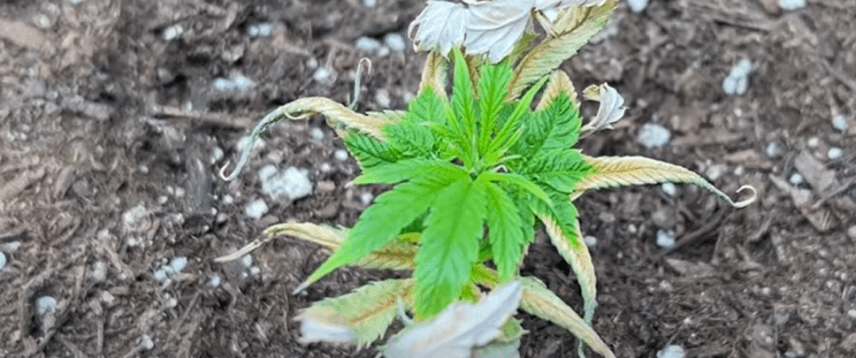
If your plant isn’t getting enough illumination, it may develop weak stems and grow tall with fragile leaves. The foliage may look faded, washed out, and likely fall off.
Giving your seedling excess lighting or placing them too close to the illumination source, on the other hand, can dehydrate the leaves.
The best solution to this weed seedling issue is to place the lighting at a safe distance. Keep them 12–24 inches away from your healthy weed seedlings and monitor them closely.
Move the lamps closer to the plant when it needs additional light. Cover your young crops with a tarp when the light reaches extreme levels to prevent overheating outdoors.
Get your crop back to optimal condition by adjusting the lights. Use CFLs instead of HPS or LEDs. These quality bulbs radiate less heat and ensure stable humidity.
Seedling stretching
Stretching is a sign of stress in weed plants, and light deprivation is a common cause. Placing the pot on a windowsill in the shade or under artificial light could trigger seedling stretching.

Insufficient soil nutrients and high temperatures could also result in this behavior. While cannabis seedlings enjoy humid and warm conditions, they stretch for oxygen if the grow room temperature exceeds 80°F. They also pull towards a light source.
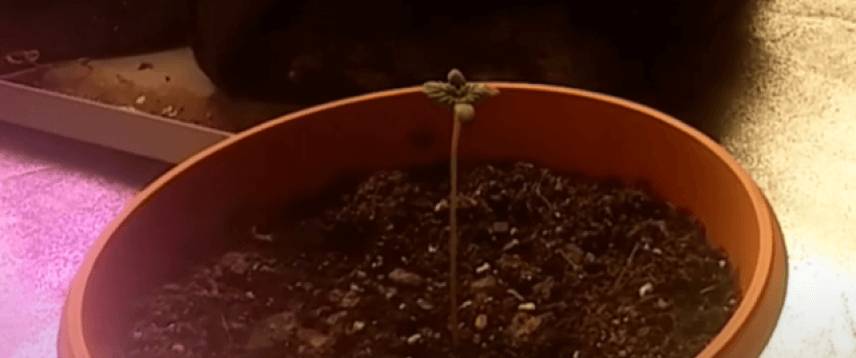
Protect your plants from stress by providing adequate illumination in the grow room. Creating a safe distance between the seedling and the light source is an excellent idea.
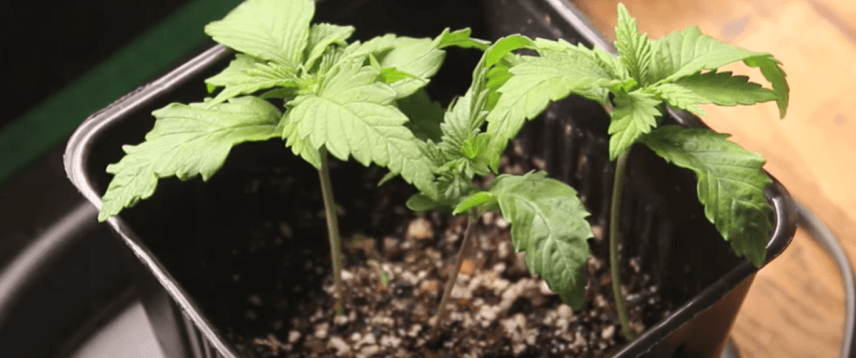
Measure the temperature regularly and introduce fans to promote circulation. Proper airflow creates a comfortable environment for weed plants to thrive and reduces excess heat.
Give your seedlings enough space to prevent the leaves from cramping, which may hinder nutrient intake and light distribution. Avoid leaves stretching by keeping your small crops about four inches apart.
Windburn
Windburn occurs when you place your pot too close to the fan. Too much of a breeze can cause cannabis seedling issues even though these crops require constant air circulation for development.
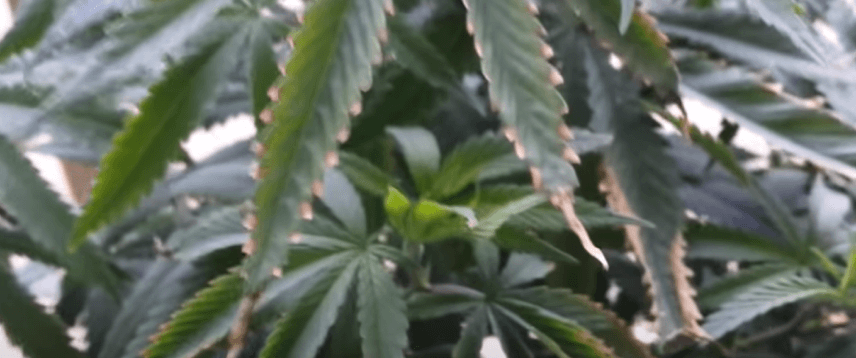
Excess wind can leave the tip of your marijuana leaves curled and burnt. An extremely breezy environment can cause stunted growth and leave spots on your seedlings. Bronze, brown, or yellow markings on leaves and smaller buds with poorer yields are other symptoms of windburn.
Encourage the cannabis seedlings that aren’t growing to flourish by controlling the environmental conditions. Avoid directing the fan towards your crop and ensure air blows the plants from under and above.
Using oscillating fans in your weed plant grow room is recommended as they produce adequate airflow and reasonable wind speed. Place them at different heights for circulation from all sides.
Adjust the wind speed and position the fans strategically. Inspect your seedlings frequently, as windburn often leaves small irregular holes. Remove the damaged foliage to allow your plants to direct nutrients towards producing new leaves.
Weed seedling mutations
If you’re a regular cannabis grower, you may encounter unusual leaves and unpredictable growth patterns. Mutations in weed seedlings are a natural occurrence that changes the behavior of the stems, flowers, and leaves.
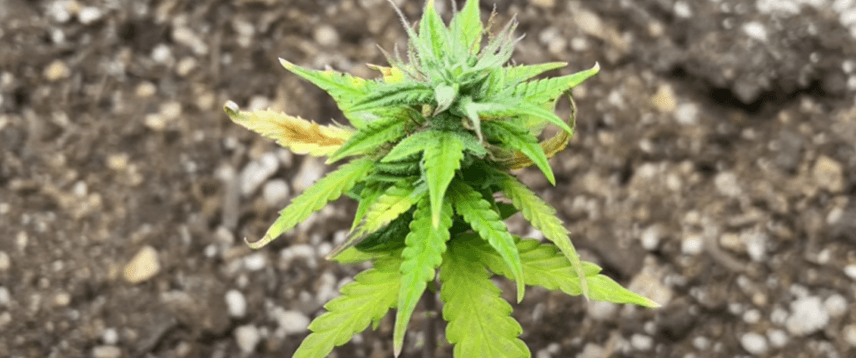
For example, crops with seedling mutations often grow an odd number of branches with different colors. Withered, twisted, and deformed leaves are common symptoms.
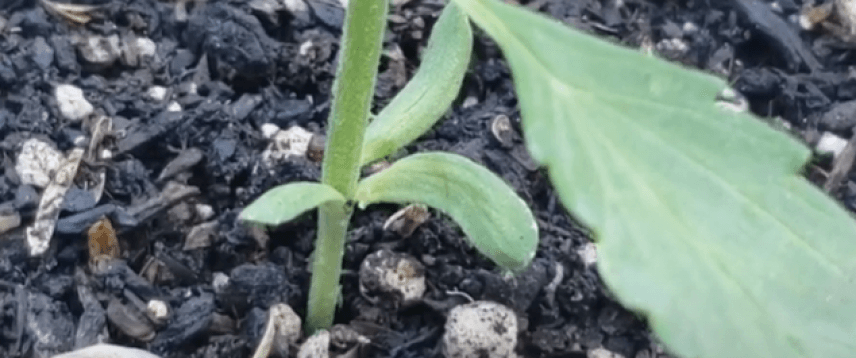
Two-toned and tri-leaved seedlings and crops topping themselves are other ways to identify the mutation in weed plants.

While the deformity doesn’t affect growth, the apexes could grow opposite each other on the stem in unusual amounts. A mutation could also cause buds to grow in the center of the leaves.
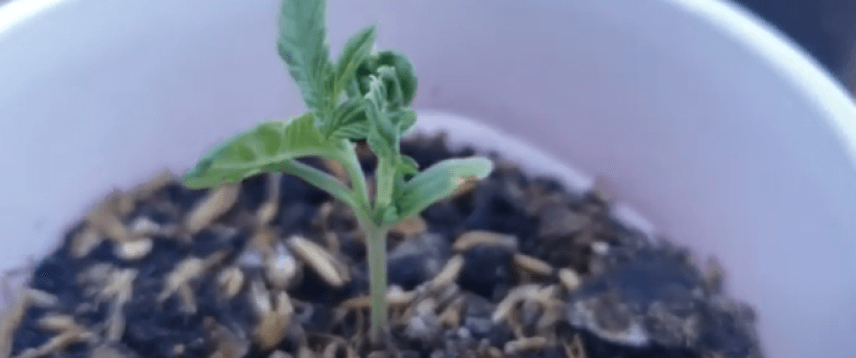
Although mutations can appear for no reason, you can prevent them with adequate preparation. Control this weed seedling problem by growing stable and reliable cannabis seeds with premium genetics.
Important issues to check during the seedling stage
The growing environment, water schedule, and light intensity are some of the essential factors to check during the seedling stage. The depth and substrate are other vital elements to investigate during the first few weeks of your weed plant’s life cycle.
Be aware of what you’re ideally hoping to see. What does a weed seedling look like when growing? It looks like a pair of small round leaves emerging from inside the seed.
Let’s discuss each issue in more detail below:
Growing environment
The temperature and humidity of the environment significantly impact growth during the seedling stage. Not providing the right conditions could affect germination and harm your plant.
Colder temperatures affect seedling development and slow growth. They typically thrive in warmer conditions ranging from 68–77°F. Germinate your weed seeds in an environment with around 70–80% humidity for desirable results.
It’s best to get a dehumidifier if your cannabis grow room has low levels. With proper room humidity and temperature, your seedling can grow healthy and happy across each life cycle.
Watering
Another crucial factor to check during the seedling stage is your H2O schedule. Not only does water help plants absorb nutrients, but it also allows them to perform essential functions.
Overwatering your seedlings could result in rotten roots, leading to shorter plants with lower yields. On the other hand, underwatering could cause wilting and lifeless leaves. If your cannabis seedling has stopped growing, insufficient soil water could be the cause.
Start watering your weed plants twice daily and focus on the volume. Leave the soil moist with enough H2O for beneficial micro and macronutrients.
Light intensity
Light is critical during seedling growth, but a vigorous intensity can hurt your plant. While most breeders strategically place lamps in grow rooms, excess strength could cause heat burn.
Weed seedlings are weak and vulnerable to excess light, which often causes dry and burnt leaves. They also take longer to develop and produce thin buds and stems. Inadequate illumination could result in crinkled leaves and plants falling over.
Ensure you achieve the optimal lighting for cannabis plants by dimming it to produce healthy seedlings. Increase the intensity as required for each life stage and place the bulbs within the proper distance from the crops.
Seed depth
Your marijuana seedling roots need nutrients from the soil for growth. The seeds may have a difficult time sprouting without adequate depth. Not only will the roots get insufficient moisture, but they can also dry out if you don’t bury them deep enough.
When planted too deep, however, the crops may not access enough oxygen. Soil moisture and nutrients often overfeed the seeds when buried too deep.
Prevent poor growth by checking the depth during the seedling stage. The roots can get adequate oxygen and proper moisture with a depth of one inch.
Substrate
Choose a moist substrate during the seedling stage for proper development, whether cultivating indoors or outside.
A slightly damp medium ensures sizable yields and provides access to water and oxygen. Conversely, a flooded substrate can drown your seeds, so drain out excess H2O and introduce fans for adequate ventilation.
If your substrate is too dry, the seeds may have difficulty germinating. It’s best to spray sterilized water twice daily to keep the soil moist for desirable results.
Solve your marijuana seedling problems
Learning about the common issues during the marijuana seedling stage can improve your chances of a successful harvest. Allow your crops to blossom and reach their full potential with handy solutions to temporary problems.
Produce healthy plants by solving overwatering, weed sapling, underwatering, light, heat, and nutrient problems. Not only can you bring life to your crops, but you can also collect sizable yields of premium nugs.
Visit our store to choose from a massive collection of top-tier cannabis seeds and start your cultivation journey on the right foot.

